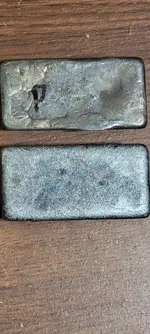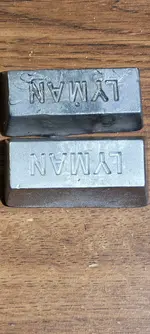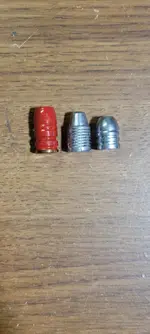- Nov 23, 2012
- 385
- 1,274
- 🏆 Honorable Mentions:
- 1
- Detector(s) used
- Minelab CTX3030
Minelab E-trac
Minelab Equinox 800
- Primary Interest:
- Metal Detecting
I found these five bullets in about a three foot circle. The fort site was used in the late 1860s/early 1870s. My thought is they're pistol bullets, but I suppose they could've been in a .44 Henry rifle round. The average weight is in the 224 grain range, but they varied from 223.6 to 226.2 grains.












